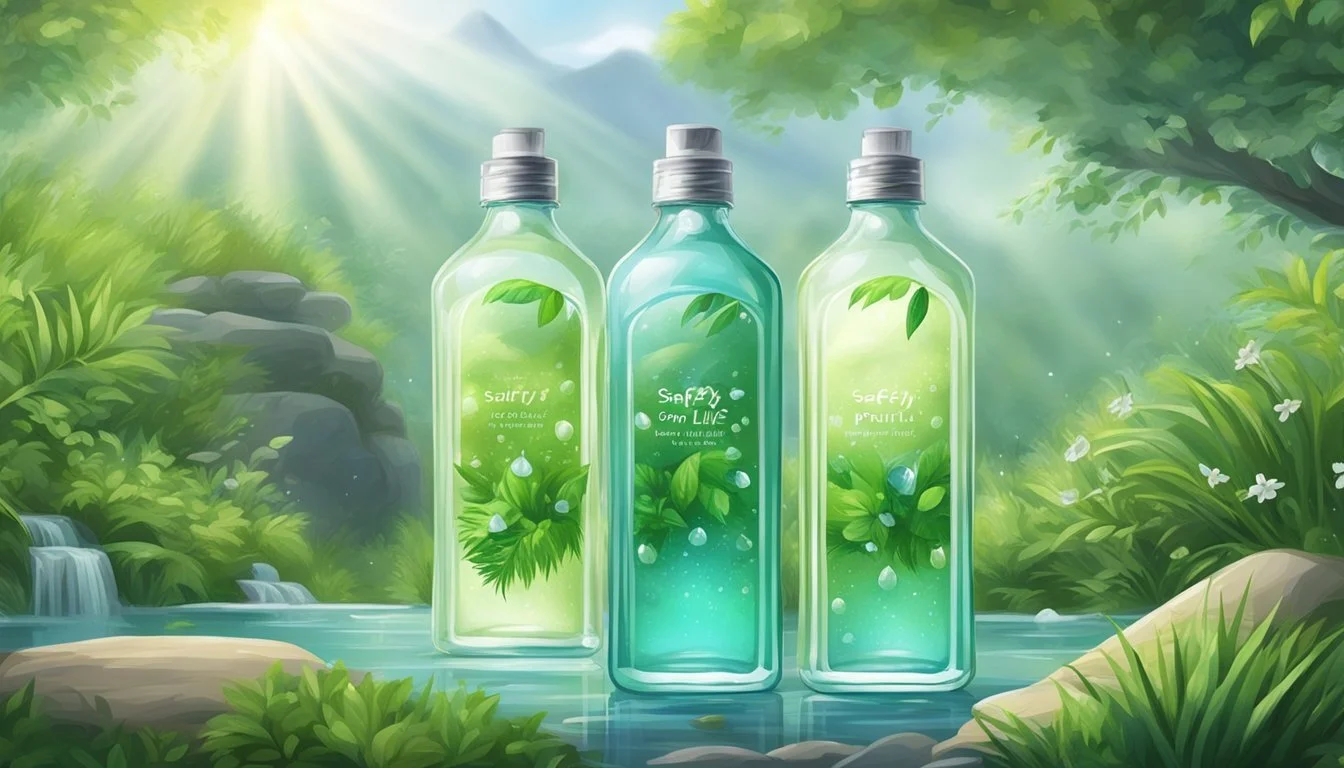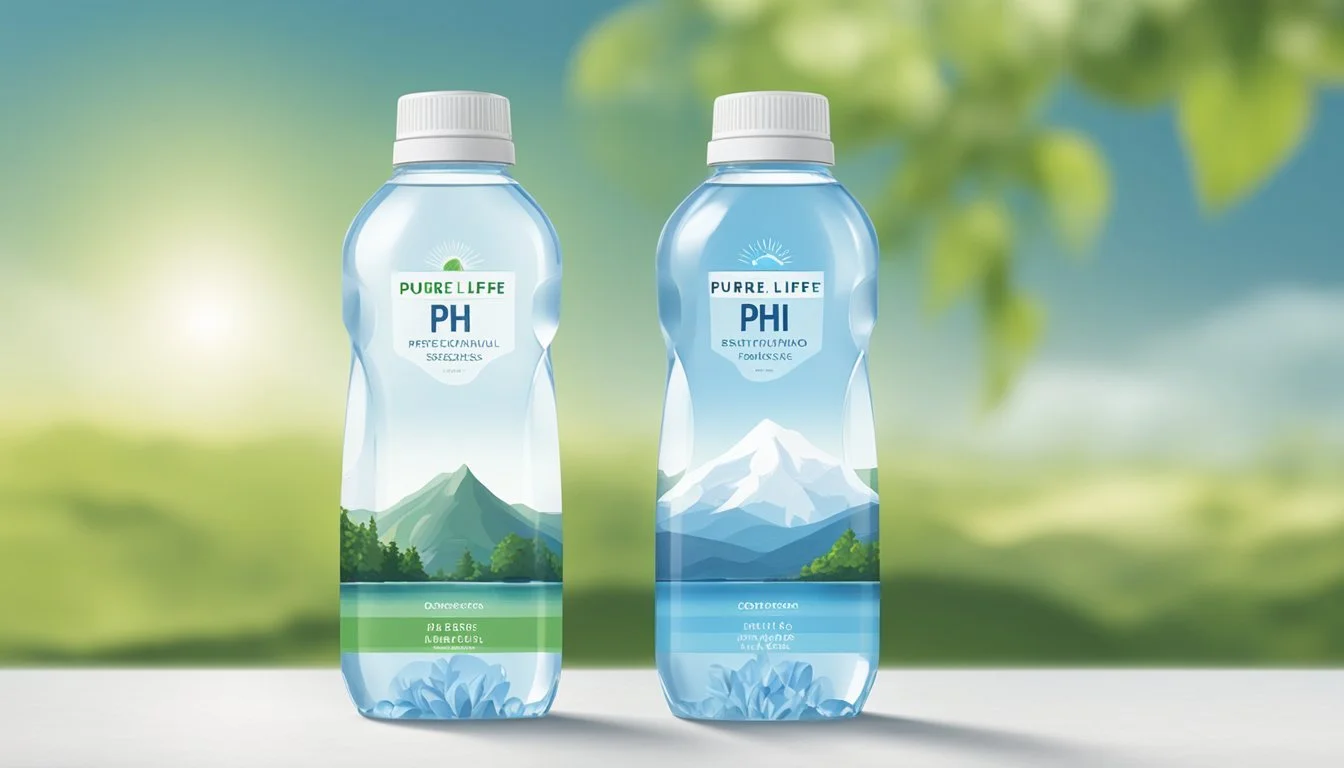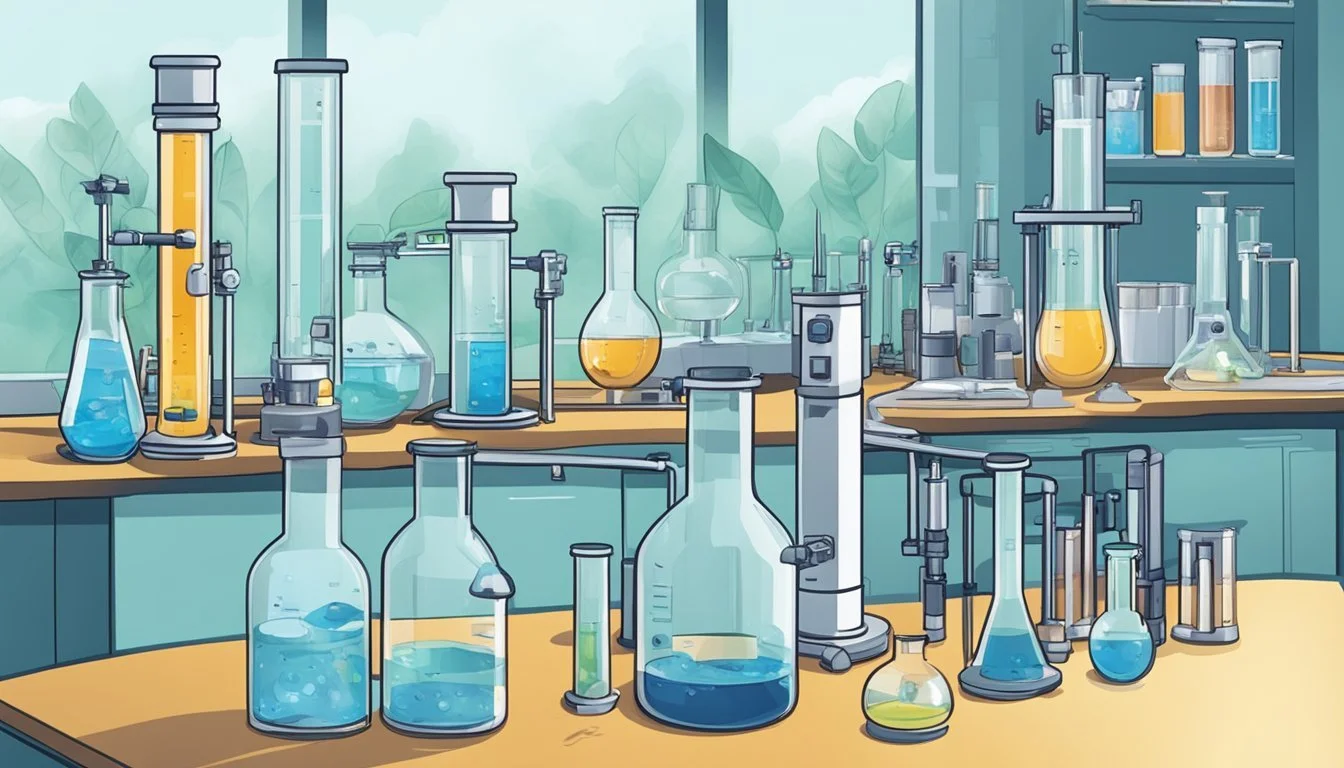Pure Life vs. Essence pH10
A Clear Comparison of Bottled Water Quality
When it comes to choosing the right bottled water, Pure Life and Essence pH10 are two brands that often catch the consumer's eye. Both claim to offer superior hydration, but they cater to slightly different preferences and needs. Pure Life, a product of Nestlé Waters, is known for its affordability and widespread availability, though some critics note it includes added sodium and preservatives.
Essence pH10, on the other hand, boasts a high alkaline pH level of 10.0, appealing to those who seek the benefits of alkaline water. This high pH can aid in neutralizing acid in the body and may improve overall hydration. For those prioritizing a higher pH level and natural mineral content, Essence pH10 stands out as the favorable option.
Choosing between Pure Life and Essence pH10 ultimately depends on individual hydration goals and health preferences. Pure Life offers reliability and cost-effectiveness, while Essence pH10 provides the enhanced benefits of alkaline properties. The detailed comparison in this article will help you decide which bottled water better fits your lifestyle.
Understanding Bottled Water
Bottled water comes in several types, each with unique characteristics, and varying degrees of purity and mineral content. Knowing these differences helps consumers make informed choices based on their preferences and health needs.
Types of Bottled Water
Bottled water is commonly classified into spring water, mineral water, purified water, and artesian water.
Spring Water: This type comes from an underground formation and flows naturally to the surface. It's usually rich in minerals and maintained pure through natural filtration.
Mineral Water: Originating from a mineral spring, this water must contain at least 250 parts per million of total dissolved solids, including minerals like calcium and magnesium, which are beneficial for health.
Purified Water: This includes water that has undergone processes like reverse osmosis or distillation to remove impurities. It's often stripped of minerals and electrolytes, sometimes requiring remineralization.
Artesian Water: Sourced from a confined aquifer, it rises to the surface through a well. This type may naturally contain minerals, contributing to its taste and health benefits.
Bottled Water Brands Overview
Various brands offer different kinds of bottled water, each capitalizing on unique properties.
Pure Life: This brand focuses on purified water, ensuring high levels of purity through rigorous processing. It is known for being accessible and budget-friendly.
Essence pH10: Marketed for its high pH level, Essence pH10 is an ultra-purified water that emphasizes alkalinity. It appeals to those seeking water with specific health properties.
Waiakea Water: Sourced from Hawaii, it is known for its natural alkalinity and mineral content, including essential minerals and electrolytes.
1907water: This water from New Zealand offers natural alkalinity with a pH level around 7.8 to 8.2, supporting hydration and health.
Comparing these brands involves looking at factors like mineral content, pH levels, and the source of the water to determine the best fit for individual preferences and health needs.
Comparative Analysis
This section explores the differences between Nestlé Pure Life and Essence pH10, focusing on their pH levels, mineral content, and taste profile.
Nestlé Pure Life vs. Essence pH10
Nestlé Pure Life is known for its neutrality, featuring a balanced pH level of around 7. This makes it neither acidic nor alkaline, appealing to those who prefer water without significant alteration in acidity.
Essence pH10, with a pH level of 10.10, is highly alkaline. This high alkalinity supports hydration and may neutralize excess acidity in the body, making it a preferred choice for health-conscious individuals seeking alkaline water.
Packaging plays a role too. Both brands utilize plastic bottles, but Essence pH10 markets itself with its high alkalinity and potential health benefits.
Taste and Mineral Content Comparison
Taste varies significantly between the two. Nestlé Pure Life offers a clean, neutral taste that remains consistent with most purified waters, making it widely acceptable to various palates.
Essence pH10, on the other hand, has a distinct taste due to its high alkalinity. Some may find it smoother and more refreshing, while others might not notice any significant difference.
Mineral content is a key differentiator. Pure Life undergoes rigorous purification, adding a small amount of minerals for taste. Conversely, Essence pH10 boasts a higher mineral content, contributing to its alkaline nature and potentially providing added health benefits.
Both options cater to different needs: one with a focus on neutrality and the other on high alkalinity.
Health and Hydration
For those choosing between Pure Life and Essence pH10, understanding the impact of pH levels and key minerals on hydration and health is essential. These factors can significantly influence the body's hydration efficiency and mineral intake.
Effects of pH on Hydration
The pH level of water influences its role in hydration. Essence pH10, with its higher alkaline pH, is believed to support the body's natural pH balance. Alkaline water may neutralize acid in the bloodstream, enhancing hydration for some individuals.
By contrast, Pure Life has a more neutral pH, which is well-suited for regular daily consumption. It offers consistent hydration without altering the body's pH balance. For individuals not specifically seeking alkaline water benefits, Pure Life provides reliable hydration.
Essential Minerals for the Body
The mineral content of bottled water can also impact health. Essence pH10 contains minerals like magnesium, calcium, and potassium, which contribute to its alkaline properties.
Magnesium supports muscle and nerve function, calcium is crucial for bone health, and potassium helps regulate fluid balance.
Pure Life, while providing hydration, may lack the higher mineral concentrations found in Essence pH10. For those looking to supplement their diet with essential minerals through water consumption, Essence pH10 might be the preferable choice.
Safety and Purity
The safety and purity of bottled water brands like Pure Life and Essence pH10 are crucial for consumers. This section examines the specific filtration and purification processes used, along with potential contaminants that could affect the water's safety.
Filtration and Purification Processes
Pure Life employs a rigorous purification process, featuring multiple stages including carbon filtration, distillation, or reverse osmosis. These methods aim to remove impurities and ensure consistent quality. Additionally, the water undergoes disinfection to eliminate any potential bacteria.
Essence pH10 uses sophisticated filtration techniques, focusing on natural sources with minimal processing. Advanced filters help maintain the water's purity while retaining essential minerals.
Both brands adhere to EPA standards to ensure safety. Pure Life tends to have a more extensive purification process due to its large-scale production, whereas Essence pH10 emphasizes natural purity with high pH levels.
Potential Contaminants in Bottled Water
Contaminants such as lead, arsenic, and heavy metals are significant concerns for any bottled water. Pure Life consistently tests for these impurities, adhering to EPA standards to ensure they are within safe limits. Regular inspections and quality controls help mitigate the risk of contamination.
Essence pH10 also undergoes rigorous testing to detect heavy metals and bacteria. Their commitment to minimal processing ensures fewer contaminants, but thorough filtration and regular testing are still paramount.
Consumers should be aware of potential issues, even with premium brands. For both Pure Life and Essence pH10, the emphasis is on maintaining high safety standards through stringent testing and advanced purification technologies.
Environmental Impact and Sustainability
Bottled water's environmental impact includes concerns about plastic waste and carbon emissions. Addressing these issues necessitates a look at packaging choices and the industry's broader commitment to sustainability.
Eco-Friendly Packaging Choices
Pure Life and Essence pH10 adopt different approaches to packaging.
Pure Life, a brand under Nestlé Waters North America, actively promotes the use of BPA-free bottles, which are designed to minimize harmful chemical exposure. They also emphasize the recyclability of their PET bottles, though the effectiveness of these efforts depends on consumer recycling behavior.
Essence pH10 also prioritizes sustainable packaging. Their bottles are made from materials claimed to be more eco-friendly. While details are less specific, the brand's packaging often highlights reduced environmental impact compared to traditional bottled water packaging.
Both brands are part of a broader trend in the bottled water industry toward more sustainable packaging practices. Balancing the use of safe materials like BPA-free plastic with strategies to reduce overall plastic waste remains a critical challenge.
The Bottled Water Industry and Sustainability
The bottled water industry's contribution to carbon emissions and waste cannot be overlooked.
Production and transportation of bottled water consume significant energy. For instance, bottled water can emit between 1.6 and 22 oz of CO2 per 50 oz of water produced. In contrast, tap water has nearly zero associated CO2 emissions.
Large corporations like Coca-Cola and PepsiCo have faced scrutiny for their environmental footprints. Efforts are underway to enhance sustainability, such as increasing the use of recycled plastic and improving water management.
Despite these initiatives, critics argue that a substantial portion of bottled water sold in the U.S. originated as tap water, which raises questions about the necessity and environmental cost of bottling it. By enhancing recycling programs and promoting reusable containers, the industry aims to address these sustainability concerns more effectively.
Consumer Considerations
When selecting between Pure Life and Essence pH10, it is essential to evaluate flavor enhancements, additives, and personal hydration needs to determine which bottled water best suits individual preferences.
Flavor Enhancements and Additives
The presence or absence of flavor enhancements and additives can significantly impact the taste and quality of bottled water. Pure Life primarily offers clean, crisp water without any added flavors, making it a straightforward choice for those seeking natural hydration.
Essence pH10, on the other hand, often includes added minerals to enhance taste and support various health benefits.
For consumers sensitive to added substances, Pure Life's simplicity of ingredients may be preferable. However, those looking for a more enriched water experience or specific mineral content might favor Essence pH10. Voss and Evian are also notable for their pure taste with minimal additives, while Smartwater and Core focus on added electrolytes for enhanced hydration.
Choosing the Right Water for You
Choosing the right bottled water involves understanding personal preferences and specific hydration needs. Individuals prioritizing the natural taste and absence of additives might lean towards Pure Life or Poland Spring.
For those interested in the potential health benefits associated with added minerals, Essence pH10 could be the more suitable option.
Additionally, lifestyle and activity levels play a role in decision-making. Athletes or those with higher physical demands may benefit from waters like Smartwater or Lifewtr, known for added electrolytes and minerals. Similarly, people sensitive to taste variations might consider brands like Fiji or Aquafina for their consistently balanced and pleasant flavors.
Innovation and Technology
Both Pure Life and Essence pH10 have implemented cutting-edge technologies to ensure the best quality and purity for their consumers.
Advancements in Filtration Methods
Pure Life is notable for its use of the Hydro-7 purification process. This advanced technology incorporates various filtration elements, including reverse osmosis and activated carbon filters. Reverse osmosis is highly effective at removing impurities and contaminants, ensuring a high level of water purity.
Essence pH10 also employs advanced filtration techniques that include multi-stage filtration systems. These systems utilize activated carbon filters to remove chlorine and organic compounds, enhancing the water’s taste and purity.
Both brands have invested in sophisticated filtration technologies, resulting in products that meet stringent quality standards.
pH Testing and Monitoring Technologies
Essence pH10 stands out for its emphasis on maintaining a high pH level. They use electronic pH meters and pH indicator paper for accurate, real-time pH monitoring during production. This ensures the water remains consistently alkaline, which appeals to health-conscious consumers.
On the other hand, Pure Life focuses on balanced pH levels suitable for everyday consumption. They use a combination of electronic pH meters and automatic monitoring systems to maintain consistent pH levels in their products.
Both companies prioritize advanced pH testing technologies, guaranteeing a consistent and reliable product for their customers.
Market and Expert Opinions
The analysis of Pure Life and Essence pH10 involves insights from industry experts and consumer experiences. Examining expert evaluations and market popularity helps in understanding the strengths and weaknesses of each brand.
Expert Analysis and Recommendations
Experts highlight that Essence pH10, with its higher pH levels, falls under alkaline water, which some believe offers health benefits like improved hydration and acid-base balance. Essence pH10 is often praised for its consistent alkaline levels and mineral content.
Pure Life, a popular brand under Nestle, provides balanced pH water. Though not alkaline, it is widely accepted for daily hydration needs. It lacks distinct mineral enrichment but is trusted for its accessibility and affordability. Experts often recommend Pure Life for general everyday use due to its reliable sourcing and stringent quality controls.
Consumer Reviews and Popularity
Consumer feedback reflects varying experiences and preferences. Essence pH10 tends to attract those inclined toward health-conscious choices, valuing its alkaline properties. Reviews often mention the perceived health benefits and premium packaging, although some consumers find it pricier.
Pure Life enjoys widespread popularity, particularly among budget-conscious consumers. Its extensive availability in big-box stores and competitive pricing make it a household staple. Feedback often cites its consistency and clean taste, though it lacks the enhanced mineral profile found in brands like Fiji Water, Essentia, or Core Hydration.
Pure Life compensates with reliability, making it favored for large-scale needs.
More About Pure Life
Cascade Mountain vs Pure Life: Which Bottled Water is Better?
Hawaii Volcanic vs Pure Life: Which Bottled Water is Better?
Hawaiian Springs vs Pure Life: Which Bottled Water is Better?
Icelandic Glacial vs Pure Life: Which Bottled Water is Better?
Nestle Pure Life vs Pure Life: Which Bottled Water is Better?
Pure Life vs Kirkland Signature: Which Bottled Water is Better?
Pure Life vs Whole Foods 365: Which Bottled Water is Better?
Richard's Rainwater vs Pure Life: Which Bottled Water is Better?
Solan de Cabras vs Pure Life: Which Bottled Water is Better?
Talking Rain AQA vs Pure Life: Which Bottled Water is Better?
Whole Foods Italian Still Mineral water vs Pure Life: Which Bottled Water is Better?
More About Essence pH10
Aqua Carpatica vs Essence pH10: Which Bottled Water is Better?
Cascade Mountain vs Essence pH10: Which Bottled Water is Better?
Core Hydration vs Essence pH10: Which Bottled Water is Better?
Crystal Geyser vs Essence pH10: Which Bottled Water is Better?
Crystal Lake vs Essence pH10: Which Bottled Water is Better?
Hawaii Volcanic vs Essence pH10: Which Bottled Water is Better?
Hawaiian Springs vs Essence pH10: Which Bottled Water is Better?
Ice Mountain vs Essence pH10: Which Bottled Water is Better?
Icelandic Glacial vs Essence pH10: Which Bottled Water is Better?
Kirkland Signature vs Essence pH10: Which Bottled Water is Better?
Liquid Death vs Essence pH10: Which Bottled Water is Better?
Mountain Valley Spring Water vs Essence pH10: Which Bottled Water is Better?
Nestle Pure Life vs Essence pH10: Which Bottled Water is Better?
Poland Spring vs Essence pH10: Which Bottled Water is Better?
Proud Source vs Essence pH10: Which Bottled Water is Better?
Purely Sedona vs Essence pH10: Which Bottled Water is Better?
Richard's Rainwater vs Essence pH10: Which Bottled Water is Better?
San Pellegrino vs Essence pH10: Which Bottled Water is Better?
Simple Truth vs Essence pH10: Which Bottled Water is Better?
Solan de Cabras vs Essence pH10: Which Bottled Water is Better?
Talking Rain AQA vs Essence pH10: Which Bottled Water is Better?
Whole Foods 365 vs Essence pH10: Which Bottled Water is Better?
Whole Foods Italian Still Mineral water vs Essence pH10: Which Bottled Water is Better?








